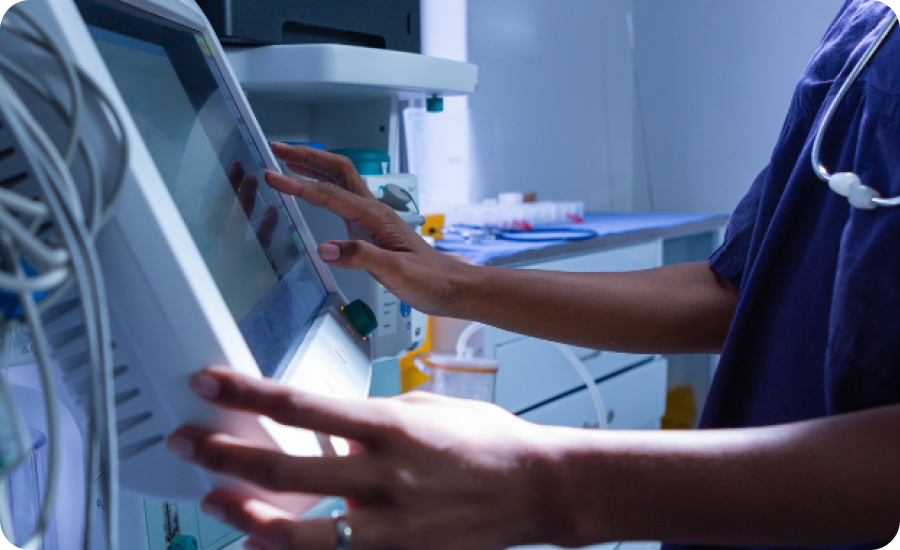The healthcare industry has already seen a revolutionary transformation towards value-based care. It’s critical for medical device companies to adopt their product to this new market.
What is value-based health care?
Value-based health care (VBH) is a healthcare delivery model that pays providers based on the quality of care they produce and the health outcomes of their patients. This style of healthcare also prioritizes collaboration between healthcare providers, specialists, and other stakeholders (such as Value Analysis Committees) to ensure that patients receive comprehensive and well-coordinated care.
The shift in healthcare is already here. According to a PwC survey, value-based care participation, increased to 60% in 2020, up from the previous 11% in 2012.
This new focus has also created a need for technology that can help prevent illnesses such as cancer, ultimately, lowering the need for lifetime healthcare costs that could have been avoided with early detection.
With this in mind, the question for many OEMs has now become, “How will value-based healthcare impact the world of medical technology manufacturing?”
From our experience, here are the top three ways that VBH is already impacting the world of medical device manufacturing:
- Device pricing
One of the most significant effects of VBH on medical device manufacturing will be the heightened scrutiny of device pricing.
In the past, manufacturers have been able to charge high prices for their products with little resistance. However, with value-based care, OEM’s will need to justify their pricing by demonstrating the clinical value of their devices to both insurance companies and end users alike. Manufacturers are being tasked with designing innovative products that are safe, easy to use and long lasting— while keeping Total Cost of Ownership (TCO) top of mind.
This new level of pricing sensitivity has impacted the entire product market including the intended use of these products.
- Stringent performance and usability assessments
In addition to pricing, VBH places greater emphasis on patient outcomes which changes how we think about product development.
Medical devices will need to be designed to deliver better outcomes for patients to meet the demands of VBH. Manufacturers will need to focus on developing devices that are not only effective but also easy to use, safe, and reliable.
For many manufacturers, this means that operations and strategies have needed to be re-thought to support the new market demands, while still complying with stringent regulations. To comply and adapt, OEMs and manufactures have significantly increased their investments in research and development, as well as a commitment to ongoing quality improvements.
Did you hear the news? The FDA recently announced updates to the 510(k) program. This update outlines the FDA’s latest improvements to strengthen the 510(k) Program while promoting patient safety.
- Innovative, new technology needs
The previous focus on advanced products that deliver superior healthcare outcomes is no longer enough.
The new emphasis is on providing the highest quality care at the lowest possible cost, and with a patient-first mentality. This means that medical technology manufacturers must develop solutions that can help healthcare providers achieve better outcomes while reducing costs and reducing the need for specialists. Often, the answer to this challenge lies in new, innovative technologies (such as virtual reality, robotics or artificial intelligence) that can make the product easy to use and adaptable for different users and different workflow environments.
Before the market shift, it wasn’t uncommon to see product development and manufacturing take on average 5-7 years before it was ready for market adoption. However, with VBH, consumers want innovative devices, and they want them now. Many OEMs find themselves struggling to compete in VBH using an outdated commercialization platform and are losing market share because of it.
So, what kind of manufacturing partner should I look for to adapt to VBH?
To succeed in the era of value-based care, medical device OEMs will need to adapt their current product life cycle to the changing healthcare landscape. This will require a shift in focus from the current and broken product development process of simply developing and selling devices, to delivering value to patients, and healthcare providers with a shortened time to market.
By consolidating product development, manufacturing, and distribution processes, a vertically integrated CDMO can help OEMs succeed. With the right mix of lean operations and a customer-centric commercialization platform, the right partner can help OEMs reduce overall costs, utilize and create new technologies, and get their devices to market quickly.
Overall,this partnership can help OEMs reduce expenses, navigate stringent performance assessments, and provide innovative technology solutions to meet the evolving needs of their customers. By working closely with these commercialization platforms, like MPE Inc., OEMs can stay ahead of the curve and make a positive impact on the healthcare industry.
